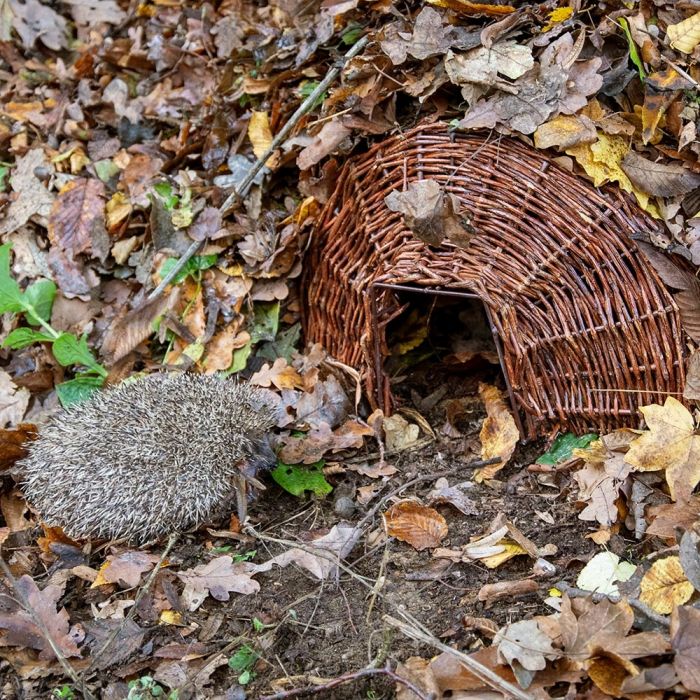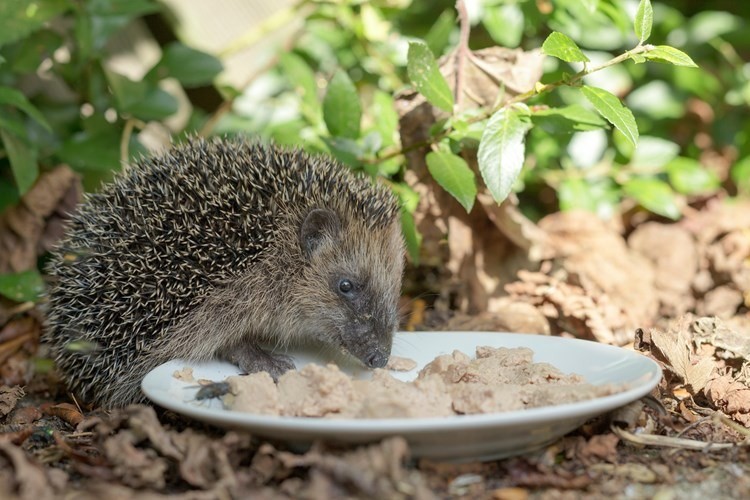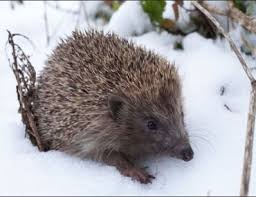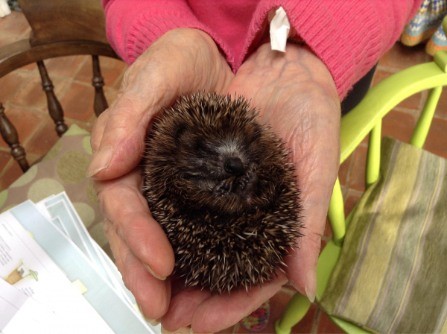Hibernation is a physiological state used by some mammals to save energy during periods of low temperatures and food shortages. In some countries this period usually begins between October and November and ends in March or April, always depending on environmental factors and the availability of food. During this time they may wake up from time to time, go out to eat a little, and go back to hibernate again.
WHEN DO HEDGEHOGS HIBERNATE?
The main triggering factor for this state is temperature. When the temperature drops below 15ºC – approximately, since there is a certain degree of variation between individuals – the hedgehogs begin to prepare to hibernate.
The other major trigger is a lack of food. According to a study carried out in New Zealand, a hedgehog under winter temperature and photoperiod conditions began to hibernate after spending 48 hours without access to food.
In a study carried out with two males between the end of October and until the beginning of May -a period in which they remained hibernating- having shown some days of activity in October, November, and May, it was determined that the weight loss was 43% and 53% respectively, assuming a loss of 2.7 to 3 grams per day.
CAUSES OF HIBERNATION

- THE NEST
Before the drop in temperatures, hedgehogs begin to build the nest. In some cases, they build them at the beginning of winter but do not occupy them until later, since at first, they reuse other empty nests. On other occasions, if they wake up in the cold season, they build another nest and occupy it immediately. In any case, most use at least two nests during the hibernation period.
A good way to help them is by providing artificial nests for them to use during this period, although they can also use them to sleep during the rest of the year or to have their young.
They can be made of wood, plastic, or with construction material such as bricks and paving slabs, if possible with a design that prevents access to predators and with a well-waterproofed and insulated cover to prevent water or cold from entering. If you would like to help the hedgehogs, you can always purchase a pre-built hedgehog house.
- ACCUMULATING FAT

During the weeks leading up to hibernation, they consume as much food as possible to increase their store of fat, which they will “feed” on during the hibernation process. It is estimated that a hedgehog needs to be over 600g in weight to be able to overcome this process.
In adult hedgehogs, this is not usually a problem, since they easily exceed the minimum weight, but it is a real challenge for the young of late litters.
When the breeding season is extended by good temperatures and a second litter takes place, which is born at the end of summer, the chances of survival of these young will depend on the time they have to grow and feed to accumulate sufficient reserves before the arrival of the winter.
DURATION AND PERIODS OF ACTIVITY

The lower the temperature, the longer the hibernation period, and the less often you will wake up. According to a study in which different hedgehogs were kept at 4.5 and 10 degrees celsius, it was shown that, while the former spent 81% of the time hibernating, the latter only 31%.
The periods in which they wake up and are more or less active occur more frequently and are longer during the beginning and end of the hibernation period than in the middle of the process. They stay awake for a few hours or even a couple of days, but they do not usually leave the nest.
The causes of these moments of activity do not always depend on external factors, but both extreme cold and rising temperatures are usually the main causes.
The time required to wake up, that is, to bring your metabolism to normal levels, is uncertain.
Some authors state that they need more than an hour, others that at least 3 or 4 hours, and others that approximately 12 hours. Be that as it may, what is known is the progress that the metabolism follows to return to normal: first, the respiratory rate increases, followed by the heart rate, and finally the body temperature.
Until the body temperature rises above 20 degrees celsius the hedgehogs remain immobile and with their eyes closed. From that moment on, they open their eyes and begin to shiver to help increase the temperature. When they reach 30 degrees celsius – practically the normal temperature – they are already trying to walk, although they cannot avoid staggering. Respiration increases to levels above normal at rest, reaching 100 breaths per minute.
The energy consumption of these periods of activity is estimated to be approximately 80-90% of the energy consumed during the entire period of hibernation.
METABOLIC CHANGES
The average body temperature of a hedgehog is 35 degrees celsius, and during hibernation it drops to about 2-5º degrees celsius, the ideal temperature being 4 degrees celsius, a temperature at which experimental studies have shown that energy conservation is more efficient.
If the nest was not sufficiently isolated and the body temperature dropped further, the animal could freeze to death. For this reason, they usually wake up when temperatures are extreme and go out to find or build another nest with better insulation.
Respiration, which is calculated at 25 breaths per minute while paused up to 50 if active, drops to the point of apnea situations – stop breathing for a few minutes.
The heart rate, with an average of 147 beats per minute in pause and 200-280 in times of activity, is limited to only about 20.
AVOID DISTURBING THEM

Still hibernating, they are very receptive and sensitive animals. Any kind of loud noise or intrusion into their nest will wake them up. To do this, they will consume a good part of their reserves to produce enough energy to bring their metabolism to a normal state, and it is precisely these reserves that they have used in a useless and unnecessary way that could be the key to their survival later on.
For that reason, if you find a hedgehog nest between the months of October and May, do not be curious and avoid snooping around the area to avoid that, if the nest is occupied, the hedgehog may feel disturbed and wake up.
END OF HIBERNATION
When temperatures begin to rise and food is more abundant, around March and April, little by little they wake up from their lethargy. Males seem to wake up earlier than females, about a month apart.
It is the end of a hard period from which not everyone manages to survive. Those who do will have to face the risks of being run over, poisoned, captured, and also avoid predators… perhaps, if they manage to survive the numerous obstacles that humans and nature impose on them, in a few months they will start the cycle again preparing for hibernation.
If you would like more information on how to attract hedgehogs to your garden, we have written a detailed guide that will help increase your chances of doing so.
Do Hedgehogs Hibernate FAQ
Do hedgehogs hibernate alone?
Yes, hedgehogs are quite solitary outside of mating season so it’s unlikely that they’ll snuggle up with another through the winter months.
Do hedgehogs wake up during hibernation?
Yes, most hedgehogs wake up frequently during hibernation and can last for a couple of days. This can be caused by hot weather or by being disturbed.
What happens if you disturb a hibernating hedgehog?
You should cover it up as quickly as possible. If you must move the hedgehog be very gentle so that you don’t bring the hog out of hibernation and try placing him close to where it was sleeping.
Will hedgehogs hibernate in a hedgehog house?
Yes, by creating a hedgehog home, you will be encouraging the hogs to rest and raise hoglets in your garden.
